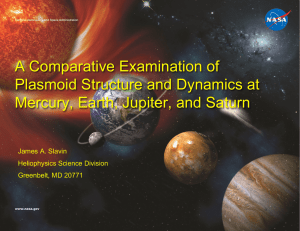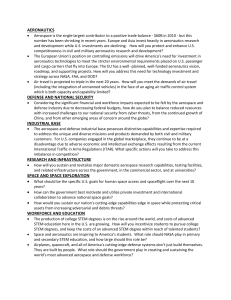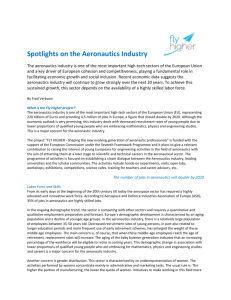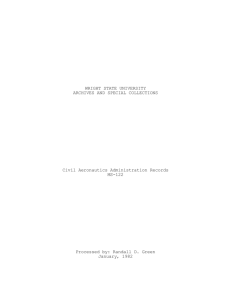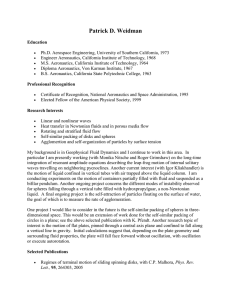MESSENGER Observations of Reconnection and Its Effects on Mercury’s Magnetosphere James A. Slavin
advertisement
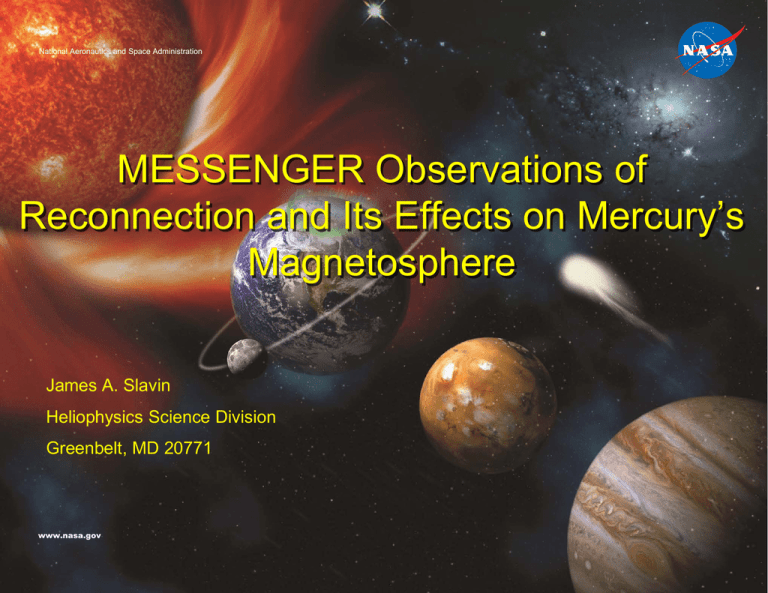
National Aeronautics and Space Administration MESSENGER Observations of Reconnection and Its Effects on Mercury’s Magnetosphere James A. Slavin Heliophysics Science Division Greenbelt, MD 20771 www.nasa.gov MESSENGER's Three Flybys National Aeronautics and Space Administration October 27, 2009 MESSENGER Flyby IMF Conditions National Aeronautics and Space Administration Your Title Here 3 Magnetopause Reconnection: BN and FTE’s Russell and Elphic (1978) • BN /B at Earth is ~ 1 – 2% while for Mercury it is ~ 10 – 20%! • Implied Magnetospheric Electric Potential ~ 30 kV and the Dungey Cycle Time ~ 2 min • FTEs every ~ 30 s; Magnetic flux content ~ 10% Mercury Tail Lobes Vs 1% at Earth National Aeronautics and Space Administration Northward and Southward IMF at Mercury Beta ~ 5 Beta ~ 160 - 220 Plasma Beta = nkTi/(B2/2µo) = (BL/Bps)2 - 1 National Aeronautics and Space Administration -5- Extreme Tail Loading at Mercury National Aeronautics and Space Administration December 15, 2008 Plasmoids and TCR’s +/- Bz Plasmoids and TCR’s move tailward; -/+ Bz move sunward. National Aeronautics and Space Administration Mercury and Earth Plasmoids Mercury Plasmoid ~ 4 sec; Earth Plasmoid ~ 30 sec National Aeronautics and Space Administration 8 Plasmoid Properties Planet Rmp Φlobe Lpmd Mercury 1.3 Rm 2.5 MWb 3 s/0.7 Rm 0.25 MWb (10%) Earth 10 Re 500 MWb 30 s/ 3 Re 15 MWb (3%) Jupiter 60 Rj 500 GWb 20 m/10 Rj 1 GWb (0.02%) Saturn 25 Rs 40 GWb 10 m/ 6 Rs 0.1 GWb (0.5%) National Aeronautics and Space Administration PPPS Flux Transfer Your Title Here 9 M2 and M3 Plasmoids National Aeronautics and Space Administration Sunward Moving TCR’s National Aeronautics and Space Administration 11 Near Mercury Neutral Line Location Last Closed Field Line crosses equatorial plane at X ~ - 1.8 to 2.8 RM National Aeronautics and Space Administration 12 Conclusions Mercury’s magnetosphere is the more responsive to IMF direction than any other in the Solar System due to high Reconnection Rate and Fast Dungey Cycle. Individual Flux Transfer Events, occurring every ~ 30 s, can increase the open flux providing SW access to the surface by ~ 10% for the duration of their ~ 10 s life spans. Variable IMF Bz on timescales comparable to the Dungey cycle time appears far more effective in opening magnetospheric flux tubes than flux transfer events or strong southward IMF alone. Southward IMF results in planetary ions on flux tubes crossing the equatorial plane more than ~ 2 – 3 RM anti-sunward of the Mercury’s terminator plane being lost to flow down the tail. National Aeronautics and Space Administration December 15, 2008
